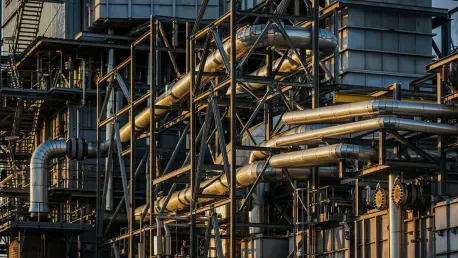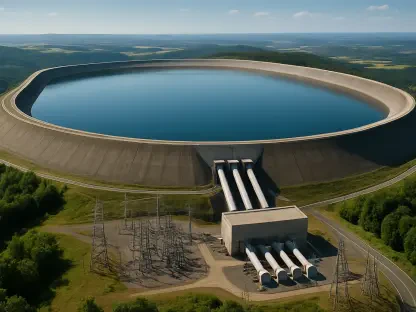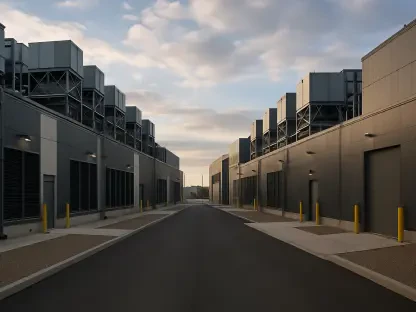The approval of the Minnesota Energy Connection (MEC) transmission project signifies a pivotal development in Minnesota’s quest for a robust energy infrastructure and a resilient economic landscape. As a newly sanctioned initiative, the MEC is set to address significant energy challenges that arise from the state’s transition away from coal-fired power generation. The project centers around a 174-mile, high-voltage transmission line, designed to fortify Minnesota’s electric grid while facilitating a substantial influx of renewable energy. This ambitious initiative emerges as a critical response to the anticipated energy void from the forthcoming retirement of the Sherburne County Generating Station. The state’s energy matrix, in the face of rising demands for sustainable solutions, anticipates transformative benefits from this endeavor, potentially reshaping regional power dynamics and invigorating economic growth across rural communities.
Strengthening the Energy Grid
Enhancing Reliability and Meeting Demand
The fundamental purpose of the MEC transmission project is to significantly strengthen Minnesota’s grid by addressing existing energy shortfalls and preparing for future challenges. With the Sherburne County Generating Station scheduled for retirement, the state faces potential gaps in energy supply. The MEC’s transmission line, operating at 345 kilovolts, plays a vital role in ensuring that these shortfalls are adequately bridged. By delivering 2,000 megawatts of electricity to the Sherco site, the project not only maintains energy reliability but also integrates over 4,000 megawatts of renewable energy into the system. This capacity is crucial as it positions Minnesota to meet escalating energy demands without compromising on environmental standards.
Moreover, the integration of renewable resources catalyzes the region’s shift towards a cleaner, more sustainable energy framework. This move is not merely about sustaining the present energy demands but also about preparing for future expansions in energy needs as new technologies and industries emerge. The anticipated boost in grid capacity affirms Minnesota’s commitment to renewable energy initiatives. By investing heavily in clean energy infrastructure, the MEC project underscores Minnesota’s role as a leader in eco-conscious power generation. This alignment with environmental goals supports the broader vision of a sustainable future for the Upper Midwest region.
Addressing Transmission Infrastructure Challenges
One of the project’s most critical benefits is addressing the pressing need for the modernization of Minnesota’s transmission infrastructure. Recent data from the Minnesota Department of Commerce revealed a significant rise in transmission inadequacies, jumping from 103 in the past to 164 inadequacies currently. Such numbers illuminate the urgent necessity for projects like the MEC to mitigate energy curtailment issues that stem from the existing outdated infrastructure. Modernizing transmission lines ensures that energy produced, particularly from renewable sources, is efficiently and reliably delivered across the state and beyond.
The MEC project is a direct response to these infrastructure challenges, ensuring a seamless integration of renewable energy into the grid. This initiative helps minimize instances of energy wastage, commonly experienced when outdated systems are unable to handle the capacities generated by modern renewable projects. By embracing modern transmission solutions, Minnesota not only reduces potential energy losses but also paves the way for innovative solutions. Such advancements promise substantial improvements in grid resilience, positioning the state to better support burgeoning renewable energy ventures. Furthermore, these improvements align with statewide priorities in enhancing energy efficiency and reliability.
Economic Impacts and Rural Transformation
Catalyzing Local Economies
In addition to its energy accomplishments, the MEC project contributes significantly to the economic landscape, particularly benefiting rural Minnesota. These regions stand to gain from the economic infusion to their local economies through job creation and increased tax revenues. Such revenue streams are vital as they fund essential services like education, emergency response efforts, infrastructure maintenance, and law enforcement. This societal impact highlights the indirect advantages of the MEC project, underscoring how energy initiatives can foster community development beyond their primary objectives.
The project also holds great promise for landowners in these rural areas. By leasing their lands for renewable installations associated with the MEC project, landowners gain access to a stable source of income, enhancing financial stability in these communities. The proliferation of such opportunities in rural areas is expected to encourage local entrepreneurship and new ventures, diversifying economic activities and helping to stem the tide of rural depopulation. These developments ensure that the benefits of energy transitions are not limited to urban centers but also extend to areas traditionally viewed as economically vulnerable.
Aligning with Strategic Priorities
The broader acceptance and support of the MEC project reflect its consonance with regional and statewide strategic priorities. As Minnesota and its neighboring states seek to reduce their dependency on fossil fuels, the encouragement of renewable energy sources becomes paramount. Projects like the MEC are integral to achieving a balanced and resilient electricity grid that can withstand dynamic demand surges and incorporate cleaner energy solutions. The successful execution and expected completion of the MEC project by 2028 stands as a testament to Minnesota’s proactive strides toward environmental sustainability. This strategic alignment strengthens collective efforts to address climate concerns while ensuring energy security.
Additionally, the project’s approval processes involved extensive stakeholder engagement and assessments to ensure that environmental and social impacts were thoroughly considered. This adherence to regulatory standards and optimization of benefits signifies the project’s strength in balancing developmental objectives with community welfare. The MEC thus emerges not just as an energy solution but as an exemplary model for responsible infrastructure development, fostering both state and regional advances in energy policies.
Pioneering a Sustainable Future
The MEC transmission project mainly aims to enhance Minnesota’s energy infrastructure by tackling current power shortages and preparing for future challenges. With the upcoming retirement of the Sherburne County Generating Station, Minnesota might face power shortfalls. The MEC’s transmission line, featuring a 345-kilovolt capacity, is essential to bridging these energy gaps. It ensures reliable electricity delivery of 2,000 megawatts to the Sherco site and supports the integration of over 4,000 megawatts of renewable energy. This is crucial for meeting growing energy demands while adhering to environmental guidelines.
Emphasizing renewable energy helps the region transition to a cleaner power system, focusing not just on current needs but also on future growth as technology advances. The increased grid capacity solidifies Minnesota’s commitment to eco-friendly energy solutions. By prioritizing clean energy development, the MEC project highlights Minnesota’s leadership in sustainable power generation, aligning with broader goals for a greener future in the Upper Midwest.









